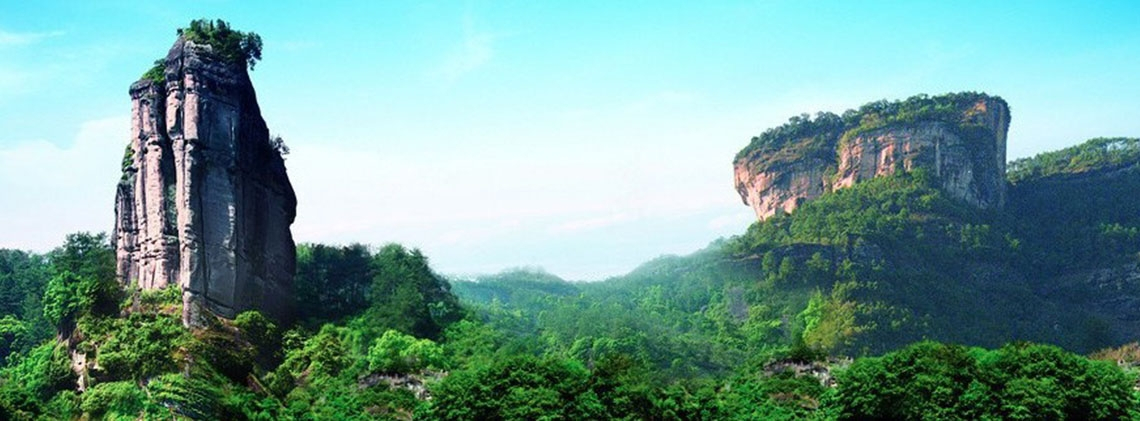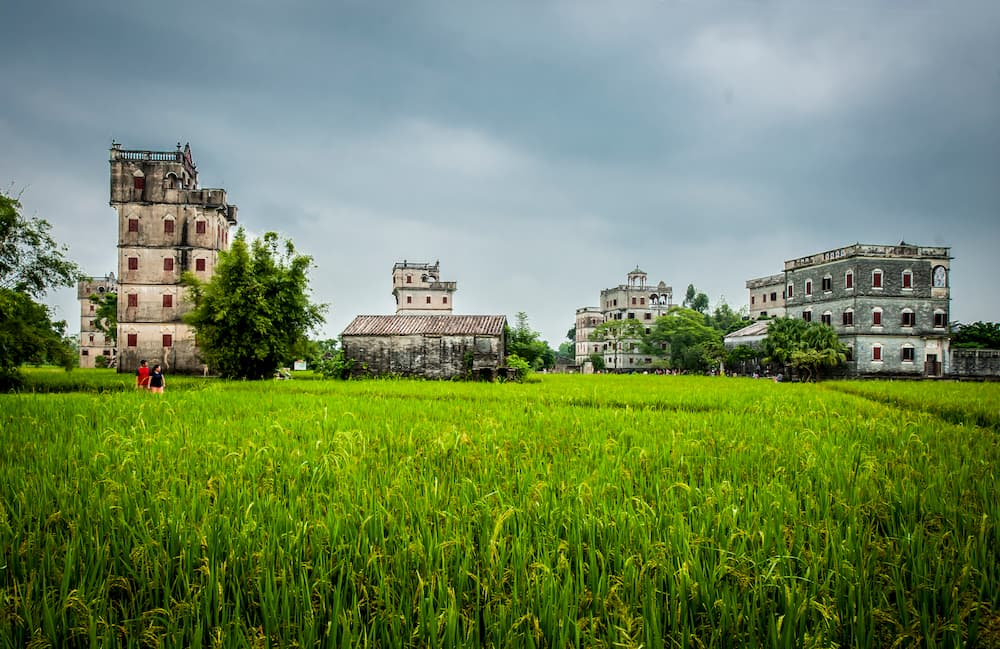
Mount Wuyi
Splendid
Chi Culture
Topic
Mount Wuyi
Situated in northwest Fujian province in southeastern China, Mount Wuyi occupies a land of 999.75 square kilometers and is one of China’s largest World Heritage sites. History and culture converged with beautiful natural scenery, the mountain it is also listed as a “Man and Biosphere Nature Reserve” by the United Nations Educational, Scientific and Cultural Organization (UNESCO).
The people who would eventually be known as the Min-Yue ethnic group were living in the Wuyi mountains more than four thousand years ago. Their culture is known for, among other things, its unique boat-shaped coffins hanging at the gorgeous cliffs. The capital city of the Min-Yue kingdom built during the Western Han dynasty two thousand years ago is recognized by the United Nations World Heritage Committee as “historical evidence of a vanished civilization.” Eight hundred years ago, the great philosopher, thinker, and educator Zhu Xi (1130–1200) established his own tradition of lixue (aka Neo-Confucianism) here. This made Mount Wuyi another cultural destination after Mount Tai. The renowned Chinese scholar Cai Shangsi (1905–2008) made the following observation regarding the importance of the Wuyi mountains in ancient China: “Confucius (551–479 BCE) came from the Eastern Zhou (770–256 BCE) and Zhu Xi from the Southern Song (1127–1279. Ancient Chinese culture comes from Mount Tai and Mount Wuyi.”
A brief description of Mount Wuyi’s richness would show that several cultures and traditions claim it as a heritage site: the four-thousand-year-old hanging coffin culture, the two-thousand-year-old Min-Yue capital city of the Western Han, the eight-hundred-year old cradle of Zhu Xi’s lixue, the diversified cliff inscriptions, an eponymous tea culture, a mountain accommodating three religions—Confucianism, Buddhism, and Daoism, and the distinct Wuyi folk culture.
Aside from the cultural heritage, the mountain is also noted for both its natural landscape and its ecological importance.
The sixty square kilometers of Wuyi mountains scenic area has long enjoyed world-fame for its landscape. Amongst its thirty-six peaks there is a nine-bend river course. The scenery has been called a “wonder of the world” and includes such attractions as the Wuyi Daoist Monastery, Tianyou (Heaven tour) Peak, Peachtree Cave, Huxiao (Roaring tiger) Rock, Shuilian (Water curtain) Cave, Big Red Robe, Lotus Peak, and the site of the Yulinting kiln. The tourist bureau has set up various scenic routes, each with special attractions.
The Wuyi Mountains National Forest Park lies between the scenic area and the nature reserve. Scenic spots in this area include the Qinglong (Green dragon) Falls, Honghe (Red river) Valley, Feicui (Jade) Valley, Da’anyuan Canyon.
The Wuyi Mountains National Nature Reserve is listed by UNESCO as both a “Man and Biosphere Nature Reserve” and a “Global Biodiversity Model Protected Area.” It is also designated “World Standard Biological Model” and “Remaining Habitat of Rare or Endangered Animals and Plants.” The preserve has a total area of 570 square kilometers and is surrounded by towering mountains and deep canyons. Many mountains are over 1,000 meters tall, and dozens of valleys are an equal number of meters deep. Among the mountains and valleys, there is an area with the original ecological forests totaling 290 square kilometers. It provides a reliable material basis for the natural sustainability of the Wuyi mountains.
There are more than 8,800 species found in Mount Wuyi: 2,888 of these are higher order plant species, while 840 are of lower order species. More than 100 species of flora and fauna are endemic to the area. The mountains have all vegetable types of tropical ecosystems of China and Central Asia, as well as dozens of biomes. It is also a place where biological type specimens can be found. The specificity and variety of its species indicate the biological and genetic diversity here. For China and the world, Mount Wuyi is a valuable biological gene bank.







